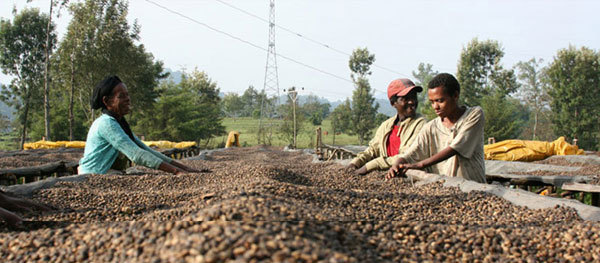Introduction to Puerto Rican coffee with pure, fragrant and granular flavor and taste of manor boutique coffee
Puerto Rico has a history of producing coffee for nearly 300 years and was once one of the most productive regions in the world. According to the Starbucks website, Spanish explorers brought coffee from Louis XIV plantations in France to the island in 1736. The fame of Yaucono Selecto is once indistinguishable from that of Kona in Hawaii and Blue Mountain in Jamaica. It is also a favorite of European palaces and the Vatican. Until the 19th century, it was the only cafe in Vienna, Paris and Madrid.
But today, outside the island, Puerto Rican coffee is rarely seen or heard of, and even its major shareholder Coca-Cola is not actively promoting it. Instead, coffee from Puerto Rico and Colombia, Brazil, Mexico, Costa Rica and the Dominican Republic is mixed and roasted without specifying its origin.
What is the reason for the decline of coffee in Puerto Rico?
Puerto Rico has been in the news lately because its government, which has been saddled with $70 billion in debt for years, officially defaulted in August. Its embarrassing situation originated from the Spanish-American War in 1898, when Spain surrendered Puerto Rico to the United States, making it a commonwealth of the United States in the Caribbean. Unlike the 50 local states, some federal benefits are not available to it, but rules and regulations must be observed. Puerto Rico has had four referendums, the last in 2012, when 61% of its citizens approved it as the 51st state in the United States, but waiting for Congress to pass is a long way off. The state government could not be protected by the bankruptcy law after default, so it was jokingly called the Greece of the United States because their financial situation was very similar to their political relations with the United States and the European Union. Puerto Rico is located in the Caribbean, picturesque, year-round climate, there are beaches, monuments, forests, but also suitable for the growth of quality coffee soil and Rain Water, unique natural conditions. Because within the territory of the United States, domestic tourists, including foreigners in the United States, do not need to apply for passports and visas, and there is no language barrier. Originally, these are its strengths, tourism and coffee economy should be booming. However, the former coffee kingdom has not only lost its halo, but also its government finances are in jeopardy. There are many reasons, and its awkward position in American geopolitics and economy may have something to do with it.
As a result, I think of the vast land of the East, strong young people, driven by life, left home, prosperous northward, but desolated the local hometown, forgotten a large number of left-behind children. Is this the only way to make some people rich first?
Also thinking of living in Hawaii, which is also picturesque but expensive, there are very few local families who do not rely on second or third jobs to make ends meet. How many tourists who come and leave in a hurry will realize the price paid by those who live in "heaven"?
The current Governor Alejandro Garcia Patia (Alejandro Garcia Padilla)
San Juan
San Juan
), people's Democratic Party. Born in Puerto Rico on August 3, 1971, he received a bachelor's degree in political science and economics from the University of Puerto Rico and a law degree from the Pan American University of Puerto Rico. Professional lawyer. Zeng Renbo, assistant judge of the Court of Appeal and professor of law at the Pan American University of Puerto Rico. From 2005 to 2007, he served as Minister of Consumer Affairs of Poland. He was elected as a senator in 2008. He has been chairman of the people's Democratic Party since April 2011. He was elected governor of Poland in November 2012 and took office in January 2013, which historically focused on sugar cane farming, and later industry surpassed agriculture as a pillar of the economy. Front
San Juan new city
San Juan new city
The five major economic sectors are manufacturing, finance, insurance and real estate, other services, government expenditure and trade. The main industries include pharmaceuticals, electronics, petrochemical, food processing, textiles and clothing, etc. Tourism is also an important part of the Polish economy. In 2009, tourism accounted for 7% of Poland's total income. With the advance of modernization, the Americanization of Puerto Rican culture has become increasingly obvious. However, people of insight on the island believe that Puerto Rican culture should not be assimilated into the mainstream culture of the United States, otherwise the national identity of Puerto Rico will be lost. This proposition is closely linked to the debate over the political status of Puerto Rico and has become a political issue of concern to every Puerto Rican. The issue of language is one of the focuses of debate. When the people's Democratic Party came to power, it regained the priority of Spanish, but as time went on, English became more and more important. The direction of the development of Puerto Rican culture is still an open question. Education is relatively developed. The government has always attached importance to education and provides free and compulsory education for students aged 6 and 16. Classes are taught in Spanish, but English is a compulsory course. Higher education is well developed

Important Notice :
前街咖啡 FrontStreet Coffee has moved to new addredd:
FrontStreet Coffee Address: 315,Donghua East Road,GuangZhou
Tel:020 38364473
- Prev

Unique flavor, taste, flavor, characteristics, taste and manor introduction of Ugandan coffee
Ugandan coffee beans have a unique flavor of delicate taste, which is very suitable for making Italian and other flavors of coffee. More importantly, Ugandan coffee beans are strictly screened according to the standards of the international market to ensure their high quality and pollution-free characteristics. Africa is the hometown of two major varieties of coffee, Arabica and Robusta, while the eastern Africa enjoys a plateau water hometown and a pearl of East Africa.
- Next

An introduction to fine coffee beans in the manor with a winding, smooth and smooth Dominican coffee flavor.
In 1677, about 4,000 French lived in 11 villages in the west of the island. In 1697, France and Spain ceded the western part of the island to France according to the Leswick Treaty of the Alliance War, formally recognizing French sovereignty over Haiti in the western part of the Spanish island, and the eastern part of the Spanish island was called East Santo Domingo. France continues to develop its agricultural economy on the island of Hispaniola.
Related
- Detailed explanation of Jadeite planting Land in Panamanian Jadeite Manor introduction to the grading system of Jadeite competitive bidding, Red bid, Green bid and Rose Summer
- Story of Coffee planting in Brenka region of Costa Rica Stonehenge Manor anaerobic heavy honey treatment of flavor mouth
- What's on the barrel of Blue Mountain Coffee beans?
- Can American coffee also pull flowers? How to use hot American style to pull out a good-looking pattern?
- Can you make a cold extract with coffee beans? What is the right proportion for cold-extracted coffee formula?
- Indonesian PWN Gold Mandrine Coffee Origin Features Flavor How to Chong? Mandolin coffee is American.
- A brief introduction to the flavor characteristics of Brazilian yellow bourbon coffee beans
- What is the effect of different water quality on the flavor of cold-extracted coffee? What kind of water is best for brewing coffee?
- Why do you think of Rose Summer whenever you mention Panamanian coffee?
- Introduction to the characteristics of authentic blue mountain coffee bean producing areas? What is the CIB Coffee Authority in Jamaica?

